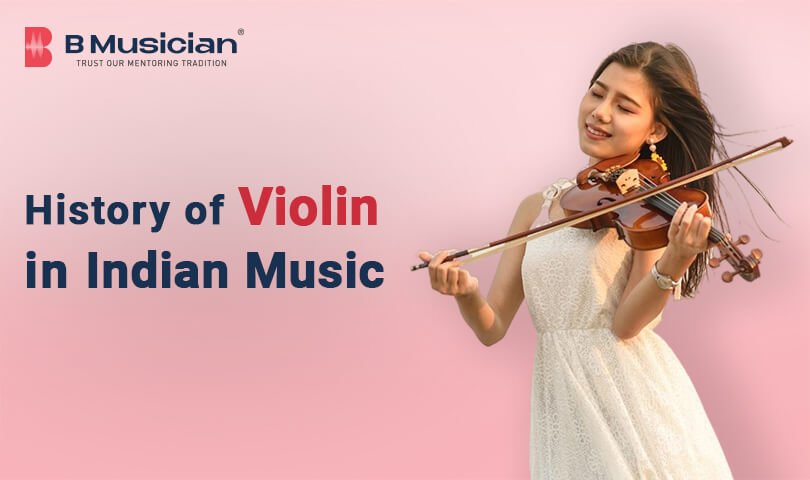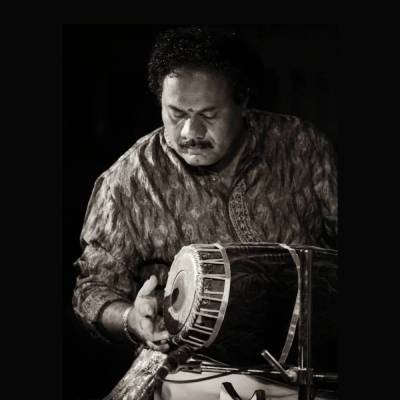The violin is a beautifully crafted wooden instrument with four strings, played by drawing a bow across them or plucking them with fingers. It’s known for its smooth, expressive sound that can convey a wide range of emotions. The violin’s graceful shape and rich tone make it a favourite of many types of music, from classical and folk to modern and beyond. Its versatility allows it to create everything from joyful melodies to soulful, soothing tunes. It’s for this very reason that the violin (western classical music and Indian classical music) has been sought after to be learnt in Institutions, private tutelage and owing to recent modern development of technology – Online violin lessons.
The violin has a rich and varied history that spans centuries or continents. Its development and influence in world music reflect both its versatility and evolution of musical traditions across different cultures.
The Violins history can be traced back to ancient stringed instruments like the Lyre and the Rebec which appeared in the in Middle Ages and had a similar shape and played pivotal role in early European Music.
The modern violin as we know it began to take shape in the 16th century in Italy, the city of Cremona is notable as the birthplace of the modern violin. It was here that the violin was developed and refined by early Luthiers (instrument makers) such as Andrea Amarti who is often credited with creating the first true violin.
Andrea Amarth’s work set the standard for the instrument’s shape and design which was later perfected by other renowned Luthiers like Antonio Stradivari and Guiseppe Guarneri.
The violin’s influence extends beyond classical and Western Music. It has been adapted into various musical traditions around the world.
Indian classical music
The violin was introduced to South Indian classical music (Carnatic Music) in the 19th Century and has since become an integral part of the tradition and culture of the country.
Chinese Music
The violin has been incorporated into Chinese orchestras and is Las used in traditional Chinese folk music.
Middle Eastern and North African Music
The violin is used in various folk traditions, often adapted to regional styles and scales.
The Violin as an instrument has a distinct shape and construction designed to produce a rich, resonant sound.
Structure
- Body– The violin’s body is typically made of wood and consists of two main parts, the top (soundboard) and the back. These are usually carved from spruce and maple respectively. The body of the violin is kept hollow to help amplify the sound.
- Neck– The neck extends from the body and supports the fingerboard of the violin. It is generally made from maple and is slightly curved to allow for comfortable playing.
- Fingerboard– The fingerboard is smooth, dark surface (often made of ebony wood) where the player presses the strings to change their pitch.
- Strings– The violin has four strings, traditionally made of Gut, Steel, or synthetic materials. They are stretched from the tailpiece to the pegs and are tuned to specific pitches:
- Western classical tuning – G-D-A-E
- Carnatic tuning- Sa- Pa- Sa- Pa.
- Bridge– The bridge is a small, curved piece of wood that holds the strings above the body of the violin and transmits their vibration to the soundboard.
- Tailpiece– The tailpiece anchors the strings at the bottom of the violin and usually has a fine tuner for precise adjustments.
- Pegs: Located at the top of the violin, pegs are used to tune the strings by adjusting their tension.
Shape
- Outline– The violin has a graceful hourglass shape with gentle curved edges. This design helps produce its characteristic warm, resonant sound.
- F holes– The top of the violin features two F shaped holes, known as F-curve which allows the sound to escape from the resonating body and contribute to the instrument’s tonal quality.
The violin’s shape and construction combine to create a versatile instrument capable of producing a wide range of expressive sounds.
Journey of violin into different Genres
Indian Classical Music
Carnatic music
The violin was introduced into Indian classical music by the South Indian musician and composer Venkatrama Iyer in the 19th Century. He was instrumental in adapting the violin to the traditional Carnatic Music of South India.
However, the Violin’s introduction and integration into Indian classical music are often attributed to Baluswami Dikshitar (not to be confused with earlier reference to Venkatrama Iyer, who was also influential but primarily in a different context). Baluswami Dikshitar a notable Carnatic musician, composer and the brother of fabled Sangeetha Mumoorhty- Muthuswami Dikshitar, played a significant role in popularising the violin within Carnatic Tradition.
The violin was initially used in Carnatic music as an accompaniment instrument but gradually became integral to solo performances and compositions, thanks to its versatility and the skilful adaptation of its playing techniques by Indian Musicians.
Hindustani music
The violin was introduced into Hindustani Classical music by Pandit V.G Jog in the early 20th century. Pandit V.G Jog, a renowned violinist and composer, played a pivotal in integrating the violin into Hindustani classical music, Adapting its techniques to suite the nuances of the traditions.
V.G Jog’s efforts involved adapting Western violin techniques to fit the melodic and rhythmic structures of Hindustani Music. His innovative approach allowed the violin to be used effectively in both accompaniment and solo performances within the context of Hindustani classical music.
His work helped establish the violin as an important instrument in Hindustani classical music, where it is now used in various capacities, including as a solo instrument and as part of ensemble performances.
The violin’s Adaptation into Indian classical music is a fascinating example of cultural exchange and fusion. Originally a western instrument, the violin was introduced to Indian Music in the 19th Century.
Introduction by Missionaries and colonisers: The violin was brought to India by European missionaries and colonial rulers. The instrument was initially used in Western-style orchestras and church music in India.
Adoption by Indian Musicians: Indian musicians began to explore the violin’s potential in the context of Indian classical music. One of the key figures in this adaption was the South Indian Violinist and composer, Lalgudi G. Jayaraman, whose innovations in the use of violin greatly influenced its role in Carnatic Music.
Adaptation to India Music theory: The violin was adapted to Indian classical music by modifying its playing technique and tuning. Indian musicians adjusted the tuning of the violin to suit the ragas (melodic frameworks) and the specific requirements of Indian classical music. For instance, in Carnatic music, the violin is typically tuned to a lower pitch and played with a unique technique that incorporates elements of traditional Indian music, such as gamakas (ornamentations).
Integration into Indian Classical Traditions: In Carnatic music (the classical music of South India), the violin became an integral part of the ensemble. It was used as both a solo and accompanying instrument. The violinists learned to mimic the nuances of vocal music and other traditional instruments, incorporating techniques such as gliding notes and microtonal shifts.
Acceptance in Hindustani Music: The violin also found a place in Hindustani music (the classical music of North India). It was used to accompany vocal performances and instrumental ensembles. The playing style in Hindustani music also involves adapting the violin to the ragas and the specific nuances of North Indian classical music.
Modern Innovations: Contemporary Indian violinists continue to innovate and explore new techniques, blending traditional Indian styles with Western classical influences. The instrument has become a versatile part of both classical and fusion music in India.
Overall, the violin’s journey into Indian classical music is a testament to the fluid nature of cultural exchange and the ability of musical instruments to transcend their origins and adapt to new contexts. The violin as an instrument has made its way into the arena of learning via institutional learning, online violin classes in India and private one on one tutelage etc thereby paving way for further propagation of this beautiful instrument.


















